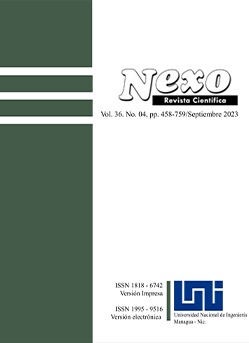Predicting Customer Orientation Using the Theory of Planned Behavior: A Case of the Iranian Gas Industry
DOI:
https://doi.org/10.5377/nexo.v36i04.16785Keywords:
Behavior Prediction, Theory of Planned Behavior, Customer Orientation, Gas IndustryAbstract
The purpose of this research was to predict customer orientation in the Iranian gas industry using the theory of planned behavior (TBH). The population of this quantitative survey con-sisted of gas industry employees, and a sample size of 384 was calculated using Cochran’s formula for infinite population. Data was collected using a questionnaire. The content validity of the instrument was verified by a panel of experts, and its construct validity and reliability were confirmed through confirmatory factor analysis and Cronbach’s alpha. Data was ana-lyzed using confirmatory factor analysis and structural equations modeling. The results showed that discipline, knowledge, moral norms, subjective norms, and perceived behavioral control have a significant positive effect on customer orientation. Moreover, planned behavior was significantly associated with customer orientation in the gas industry. Therefore, TBH can be used for predicting customer orientation in the gas industry.
Downloads
1302
Downloads
Published
How to Cite
Issue
Section
License
Copyright (c) 2023 Universidad Nacional de Ingeniería

This work is licensed under a Creative Commons Attribution 4.0 International License.
The authors who publish in Nexo Scientific Journal agree to the following terms:
- Authors retain the copyright and grant the journal the right of the first publication under the license Creative Commons Attribution License, which allows others to share the work with a recognition of the authorship of the work and the initial publication in Nexo Scientific Journal.
- Authors may separately establish additional agreements for the non-exclusive distribution of the version of the work published in the journal (for example, in an institutional repository or a book), with the recognition of the initial publication in Nexo Scientific Journal.
- Authors are allowed and encouraged to disseminate their works electronically (for example, in institutional repositories or in their own website) before and during the submission process, as it can lead to productive exchanges, as well as earlier and greater citation of published works.










